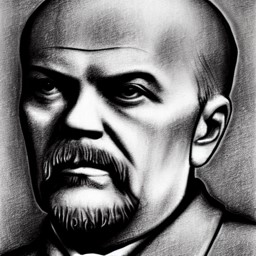History Corner: The Soviet Union Begins
December 13, 2022
This will be the first in a (non-sequential) series on Russia and the Soviet Union.
From a young age, I had an interest in history. At the age of 11, I was interested in learning about Mesopotamia and ancient civilizations. I had knowledge of topics like Babylon and the Mongol Empire. From what I can recall, it was around 6th grade, and I was accumulating knowledge of World War II; from there I became interested in the Soviet Union, including not only Russia but the rest of the Soviet republics. I remember learning about US president Franklin D. Roosevelt, British Prime Minister Winston Churchill, and Soviet premier Joseph Stalin. The Yalta Conference, which brought together these parties, was meant to unite the three major Allied nations and allow them to discuss postwar reconstruction of Germany and other affected European nations.
To elaborate on the Soviet Union, you must first consider its origins, which date to the destruction of the old Russian Empire. After the outbreak of the Russian Revolution of 1905, Vladimir Lenin, a communist revolutionary, returned to Russia. The revolution, which consisted mainly of strikes throughout the Russian empire, came to an end when Tsar Nicholas II agreed to reforms, including the adoption of a Russian constitution and the establishment of an elected legislature. Although there was some reform, it was not enough for the Russian people. This was a time in which Tsar Nicholas’ incompetence and the charismatic but pernicious influence of Rasputin took their toll. Russia failed to win its World War I campaign against the Central Powers of Germany and Austria-Hungary. There was an economic crisis, stoking intense dissatisfaction among peasants, workers, and soldiers. There was also the matter of the monarchy’s level of control over the Russian Orthodox Church. A new revolution broke out in 1917 Russia, first bringing a Provisional (non-communist) Government under Kerensky, who continued the war. The year reached a dramatic peak with the October Revolution, in which the Bolsheviks (communists), with the help of armed workers and soldiers in Petrograd, successfully overthrew the Provisional Government, transferring all authority to the Bolsheviks. The Bolsheviks soon relocated the national capital from Petrograd to Moscow. Lenin fulfilled a pledge to seek a peace deal with Germany and Austria-Hungary.
Although the Bolsheviks, with Lenin as their leader, had strong support from the Russian people, they had many enemies, both foreign and domestic, who refused to recognize their communist government. As a result, Russia erupted in a bloody civil war against the enemies of the Bolshevik regime, which were collectively called the White Army. People loyal to the Bolshevik regime formed the Red Army to fight them. Fearing that the White Army would free Tsar Nicholas and his family, a local Bolshevik commander secured Lenin’s approval and executed the tsar and his entire family in the early morning hours of July 17, 1918.
A treaty between Russia, Ukraine, Belarus, and Transcaucasia (modern Georgia, Armenia, and Azerbaijan) formed the Union of Soviet Socialist Republics (USSR) under the newly established Communist Party, led by Lenin, on December 30, 1922. The Soviet era had begun.
